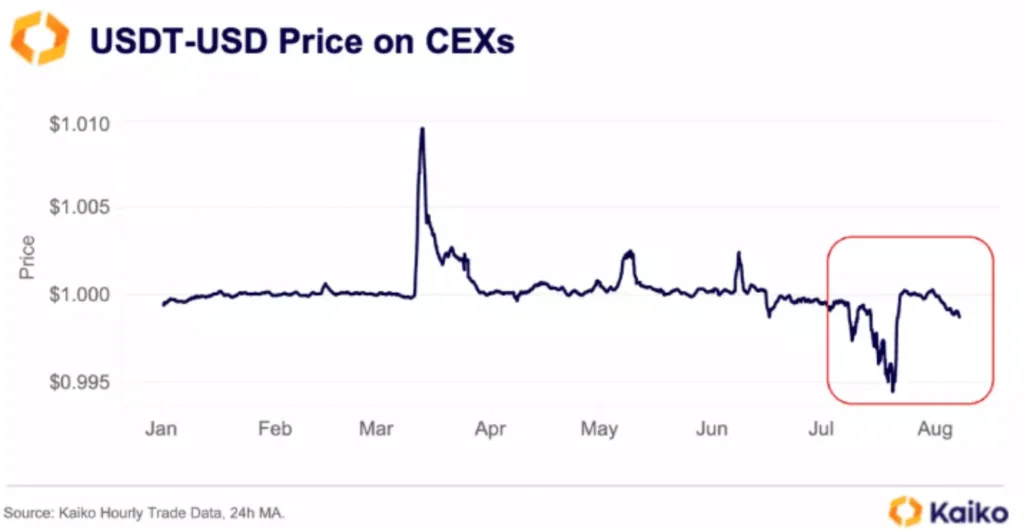Recent Kaiko reports have emphasized the DeFi industry faces a significant imbalance in the Tether (USDT) stablecoin on platforms such as Curve and Uniswap.

As a result of the Curve exploits, which jolted the DeFi industry and led to the return of more than 70 percent of the missing funds, a precarious situation has developed.
According to Kaiko’s report, most of the concern focuses on Curve’s 3pool and Uniswap V3’s primary USDT-USDC pool, both of which have become unbalanced due to increased USDT sales.
Mid-July saw a massive $100 million net selling on Uniswap between July 15 and July 22, coinciding with the onset of this issue.
Even though sales had decreased in the subsequent weeks, they resumed on July 31 in response to the Curve exploit. It is essential to note that these two incidents appear to be unrelated.
Uniswap has experienced approximately $40 million in net sales, while Curve has encountered roughly $35 million. Currently, the Curve pool needs to be more balanced, with 60% of holdings in USDT.
This situation has reverberated on centralized exchanges, resulting in a modest decline in USDT’s peg to the U.S. dollar over the past few days.

No distinct bearish catalyst has emerged, making it difficult to discern why traders sell USDT. Contrary to expectations, Tether recently reported substantial Q2 revenue.
Tether’s Chief Technology Officer (CTO) has alluded to the possibility of foul play, implying a possible connection between selling and listing Hong Kong-based First Digital’s new stablecoin FDUSD on Binance. According to Kaiko’s report, this theory needs concrete evidence linking the two events.
The FDUSD Effect
FDUSD has struggled to acquire traction since its listing, despite Binance’s efforts and the introduction of zero-fee trading pairs. While initial volumes briefly surpassed $200 million, they soon declined to approximately $30 million.
Given the historical impact of such promotions on trading volume, the lackluster response to the zero-fee FDUSD pairs is unexpected. This reluctance of traders highlights the enigmatic nature of the ongoing heavy selling and the intensifying competition in the stablecoin market.
Uncertain are the implications of the imbalance and its cascading effects on the DeFi landscape.
